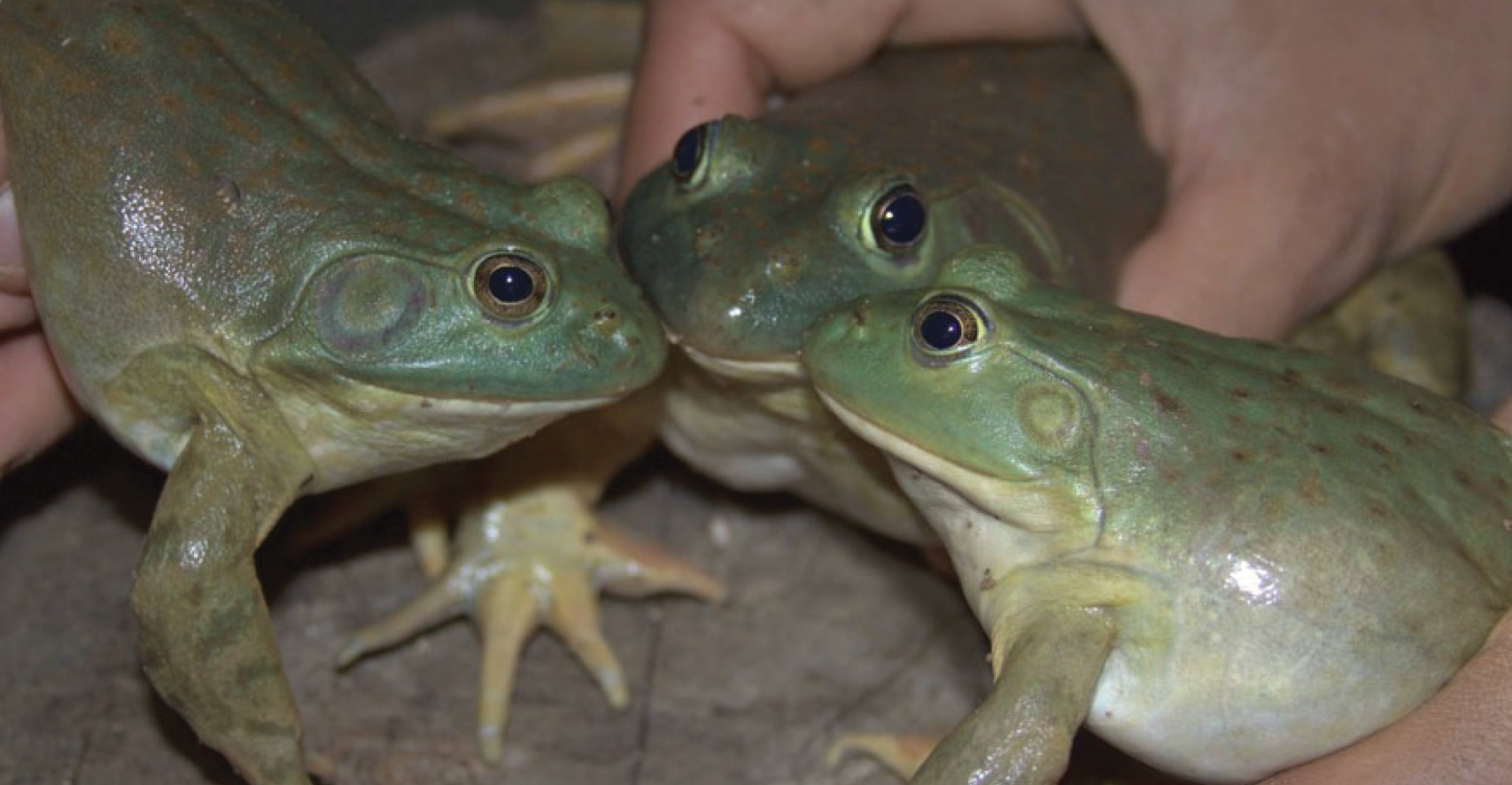Successful eradication of invasive American bullfrogs leads to co-extirpation of emerging pathogens
Recent ARMI-led research showed the removal of invasive American bullfrogs from livestock ponds and small lakes in southern Arizona also resulted in the apparent local extirpation of two pathogens associated with the bullfrogs. The American bullfrog is native eastern North America but has become widespread in the West, where it preys on many native species of conservation concern. Other recent ARMI-led research from the area suggested that American Bullfrogs could act as reservoirs for pathogens like amphibian chytrid fungus (Batrachochytrium dendrobatidis; Bd) and ranaviruses, which are often lethal to native amphibians, but less so to American Bullfrogs.
In the early 2000s, American bullfrogs were eradicated from ponds in the Buenos Aires National Wildlife Refuge near the Arizona-Mexico border to assist with the reintroduction efforts for the federally threatened Chiricahua Leopard Frog. In 2015, the bullfrog reinvaded the refuge and was once again removed. This reinvasion from outside the refuge motivated funding for a multi-year, landscape-scale eradication program. In the fall-winter of 2016 and the winter of 2020-2021, the research team tested the water at bullfrog eradication and control (no eradication efforts occurred) sites for the DNA (environmental DNA or eDNA) of invasive bullfrogs, federally threatened Chiricahua Leopard Frogs, and Bd and ranaviruses.
Results from the eDNA sampling showed American Bullfrogs were eradicated successfully from most sites, and where bullfrogs were eradicated, the pathogens were also no longer detected. Chiricahua Leopard Frogs did not increase in occurrence after eradicating bullfrogs, possibly due to an exceptional drought that could have limited the ability of native amphibians to colonize sites.
To our knowledge, this is one of the few studies to link eradication of an invasive species to co-eradication of emerging pathogens. Our spatially replicated experimental approach provides strong evidence that management of invasive species can simultaneously reduce predation and disease risk for imperiled species.
To view the full article click this link: https://doi.org/10.1111/conl.12970

